The intriguing story of the "Portrait of Adele Bloch-Bauer I": Part Two
Today Andrew and I continue the story of who owned the Portrait of Adele Bloch-Bauer I and other paintings by Gustav Klimt sold to The Belvedere Gallery in Vienna by the Nazis. You can read how this came about in The intriguing story of the "Portrait of Adele Bloch-Bauer I": Part One.
The Belvedere Gallery claimed that they owned the paintings as they had purchased them and furthermore Adele had said in her Will that she wanted the gallery to have the paintings. In fact, appended to two paintings by Gustav Klimt brought to The Belvedere (the Austrian National Gallery) in 1941 was a brief note from Dr. Erich Fuhrer who had arranged for the sale of the paintings, was a note to the effect that "Portrait of Adele Bloch-Bauer (I)" and "Apple Tree" were being transferred to the museum "in accordance with the wishes of Adele Bloch-Bauer," who died in 1925. Dr Fuhrer who had been appointed by the Nazi regime to liquidate the estate of the Bloch-Bauers, signed the note "Heil Hitler."1
I am sure you will be pleased to know that Dr Fuhrer did spend many years in gaol after the war. But on with the story.
The Belvedere, now in possession of these Klimt paintings was able to stage one of the largest exhibitions of Klimt to this time. But they had a problem. Now that Austria was under Nazi rule they couldn't display portraits of Jewish women and so as we explained in Part One of this story, the name of Portrait of Adele Bloch-Bauer I became The Lady in Gold.2
The three Klimt paintings (below) stayed in The Belvedere until the end of the war.
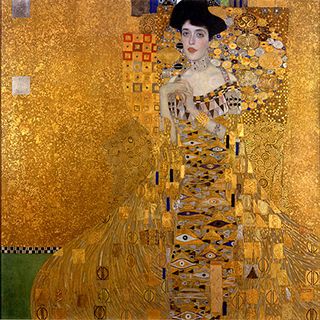
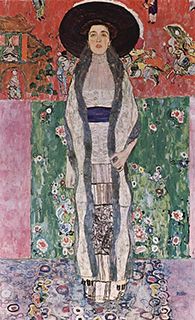
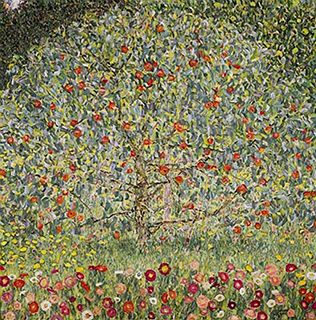
When WWII ended the Allied Forces set about recovering the looted art. The five Klimt paintings that had been stolen - the three in The Belvedere, one other in another gallery and the fifth one found in Dr Fuhrer's own possession were taken to Munich to be catalogued and with the help of the detailed inventories kept by the Nazis established who the original owners had been. The works of art were then returned to the country of each original owner, where known. and each country was charged with the restitution of the works. 2
With respect to Göring's personal collection, when the original owners couldn't be identified the art works we given to German museums to hold and today there are still over 100 paintings from Göring's collection whose rightful owners have not been established. 2
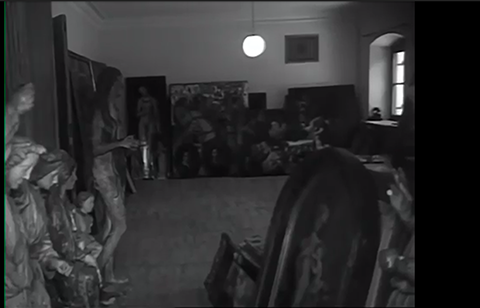
The policy to return the stolen works back to the country of origin meant that all of Ferdinand's Klimt paintings were sent back to The Belvedere! The very people who had purchased the paintings from the Nazis in the first place! 2
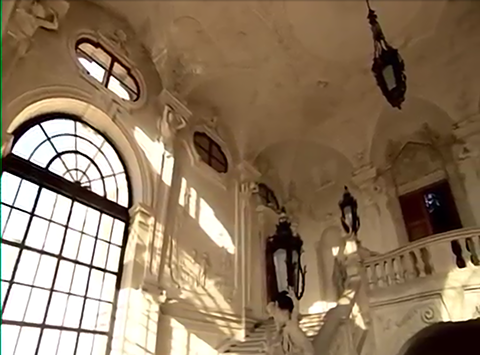
Importantly when Ferdinand Bloch-Bauer died in November 1945 the paintings were not mentioned in his will. To his knowledge they had been confiscated by the Austrian State through Nazi laws. However, he did include a clause according to which his wealth should be handed over to his nephew Robert and his nieces Luise and Maria.5
Maria Altmann (nee Bloch-Bauer) and her husband settled in the USA and Maria started her own clothes business from their apartment. And she watched the paintings by Gustav Klimt escalate in value - each one being worth millions - while she tried to eke out a living making clothes.
But now the story gets very tricky. In 1946 the Austrian Government passed the Annulment Act which was designed to annul all transactions motivated by the discriminatory Nazis ideology that occurred from 1938 to 1945.5
Apparently, in 1948-1949 the Bloch-Bauer heirs – through a lawyer Dr. Rinesh – obtained the restitution of most of the collection and export permits for the United States, where they lived. Under the Annulment Act, the Jews that wanted to leave Austria were required to “donate” valuable artworks – in favour of Austrian public museum and in the name of preserving national heritage – as a condition of receiving export permits for other valuable items. Dr. Rinesh agreed to donate the paintings Häuser in Unterach am Attersee (below), Adele Bloch-Bauer I, Adele Bloch-Bauer II, Apfelbaum I, which were already in the State’s possession. In addition, Dr. Rinesh relinquished the paintings Buchenwald and Schloss Kammer am Attersee III (below).5⁂
⁂Please note that I have only read this information about the involvement of Dr Rinesh on one site and as such it is unvalidated.
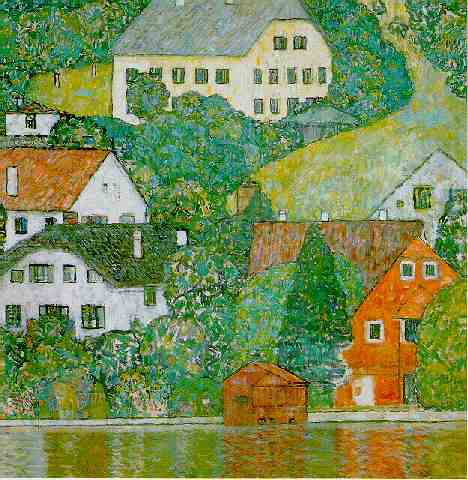
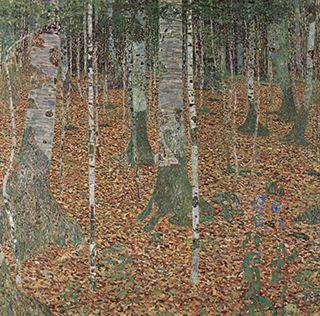
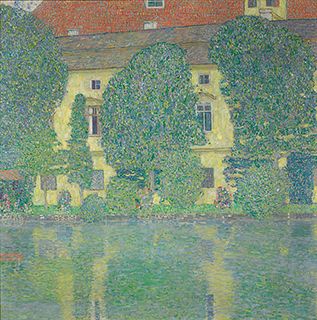
But it wasn't until 1998 when the painting Portrait of Wally, by Egon Schiele (below), was confiscated in New York while on loan from the Austrian National Gallery that the truth behind what was happening came into public focus.5
Schiele's heirs claimed that the painting had been looted by the Nazis and as a result the paintings were impounded. This case raised the whole profile of the involvement of museums and galleries under Nazi rule and what their role has been since the end of the war.2
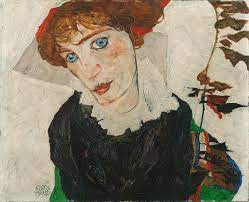
As a result of these allegations that the Austrian galleries possessed looted art the Austrian Government opened up its archives to permit research on the provenance of the national collection and to prove that they had not been stolen.
An Austrian journalist, Hubertus Czernin (below) spent a year in the archives and uncovered documents proving that Ferdinand Bloch-Bauer never freely donated the Klimt paintings as his Will stated that all previous testaments concerning the paintings were to be null and void. Czernin's research also revealed that The Bevedere knew that their ownership of the paintings was not legal. 2
The Klimt paintings had in fact been left in Ferdinand's will to Maria and her brothers.
The Austrian Government closed the access to the archives and set up a Government Committee to rule on the ownership.2

When Maria Altmann, in 1999, heard of the allegations made against the Austrian Government by the heirs to Egon Schiele's estate, she hired the lawyer Eric Randol (Randy) Schoenberg (nephew of the famous composer Arnold Schoenberg who had been a family friend) to make a claim against the gallery for the return of five works by Klimt.2
Randy's family had also suffered under the Nazi rule and so he gave up his job and took on Maria's case, which was deeply personal to him, on a no win, no fee basis. 2
The Committee refused to speak to Maria and her lawyer Randy Schoenberg or to look at their evidence and by the end of 1999 ruled that the paintings were not to be returned to Maria. By this time Maria was in her 80s and she said They were hoping I'd die and then its finished! But then I didn't given them that favour!2
Importantly Maria stresses that she wrote to the Austrian Government and assured them that she didn't want to take the Klimt paintings out of Austria as she knew how important they were to Austria but the Government didn't even answer her letters. 2

And so Maria and Randy decided to sue the Austrian Government for the return of the paintings. But Austrian law demanded that Maria put up as security a sum that amounted to an extraordinary large sum of money and even then the Austrian Government appealed and demanded more.
Randy then set about to see if they could sue the Austrian Government through the American courts. And to shock you - Randy Schoenberg was only in his early 30s at this stage and was willing to risk everything to fight for justice to prevail. 2
We will leave the story for today, a story held together by the courage nd tenacity of three people - Maria Altmann, Randy Schoenberg and Hubertus Czernin the investigative journalist who spent a year combing the archives of the Austrian Government until they were closed. We return tomorrow with the conclusion.
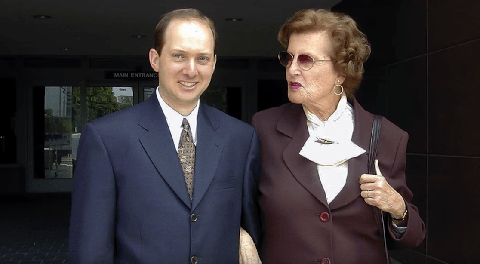
Credits
1. haaretz.com
2. The Lady in Gold Documentary, A film on the recovery of the Bloch-Bauer Klimt paintings by Maria Altmann in 2006. Electric Sky, Nigel Janes Director/Producer.
3. en.wikipedia.org
4. commons.wikimedia.org
5. plone.unige.ch
6. geni.com
7. thefamouspeople.com
8. myuscstory.org

